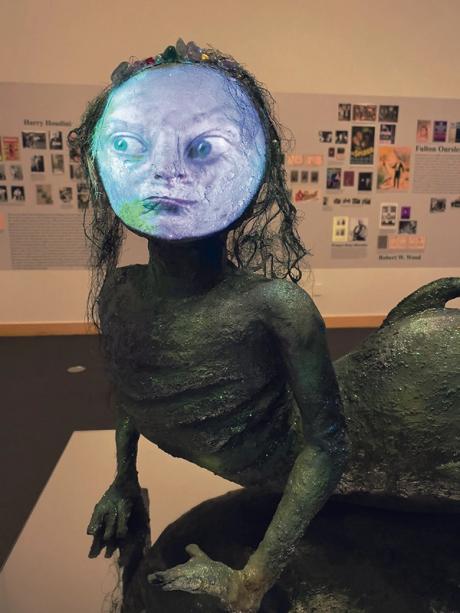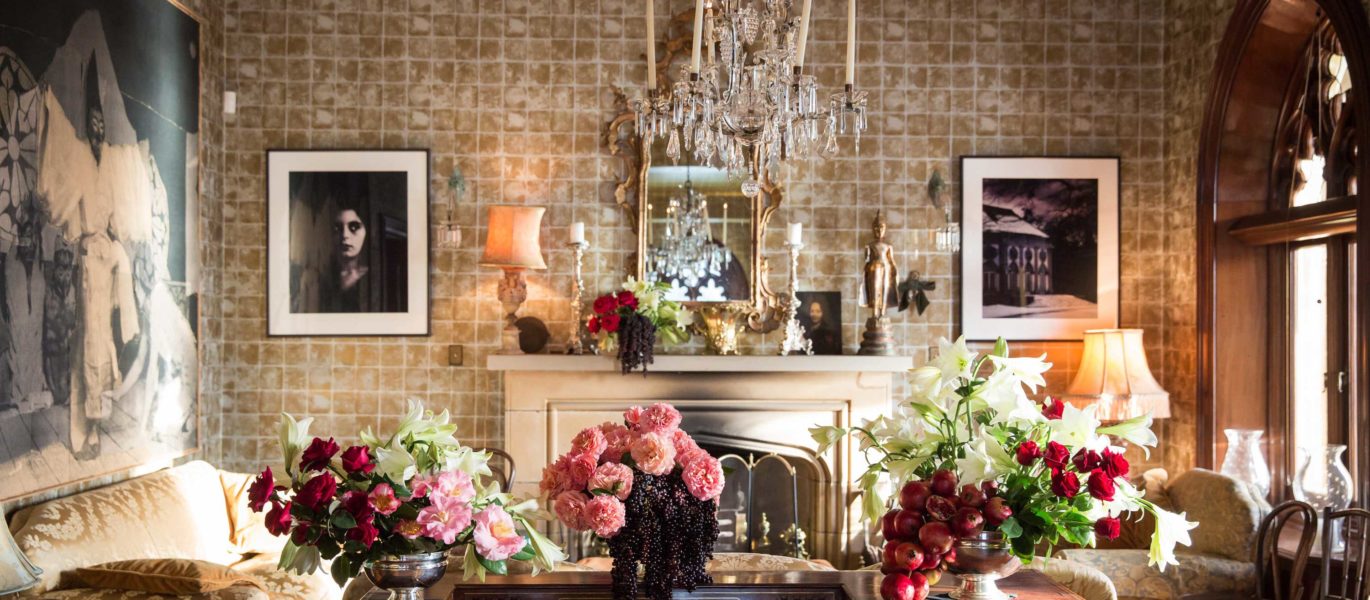Circumstances for Early Arrival, 2022
2022 - Painting (Painting)
50 x 72 cm
Young Min Moon
Young Min Moon’s recent paintings repetitively portray the rituals bound up in the Korean tradition of Jesa . Even amidst the disappearance of many Korean customs, Jesa, a type of Confucian ancestor veneration rites, remains a practice in South Korean society that cannot be easily discarded. Throughout the artist’s childhood, Jesa were the only moments through which he could find peace and safety in times that were rife with violence and commotion. Growing up in a home where Jesa customs were retained despite the predominance of the Catholic faith post-immigration to the United States, the rituals of Jesa remained as acts of manifesting communal solidarity and cultural identity. Stylistically rendered from a towering perspective, Circumstances for Early Arrival features a low-set table, nearly spilling over with various fruits, other traditional Korean foods, and candles. Harboring repetitions of the subject matter and the scene, Moon’s painting appears as a world wherein layers with disparate meanings emerge and perform différance on a single plane, completed as one compact scene where diverse layers that either surround or are associated with Jesa—including death, mourning, family belongingness, and, furthermore, a sense of burden, duty, and responsibility—intersect. In Moon’s repetitive paintings, however, Jesa constitutes a cultural symbol that cannot be clearly acquired or given a single definition; this, in turn, casts an emptiness or uncertainty. The ritual scene can be viewed as going beyond meanings forged by tradition and the individual and as pictorial allegories of personal, social, and communal points of intersection that the artist—who has experienced both the modernization of South Korean society and a diasporic life—holds onto.
Young Min Moon is a Korean American artist, curator, critic, and art historian, who migrated to the United States from South Korea as a teenager. His realistic painting practice can be genealogically traced to the painting tradition of Korean Minjung art. Moon has also had personal exchanges with Minjung group artists for quite some time. Moon’s artistic practice draws upon his migration across cultures and his awareness of the hybrid nature of identities forged amid the complex historical and political relationships between Asia and North America.
Colors:
Related works sharing similar palette

© » KADIST
Bady Dalloul
2017The Great Game is a series of works composed of a number of card combinations illustrated by the faces of key political figures shaping the geopolitical landscape in the Middle East...

© » KADIST
On the occasion of publishing A Partial Taxonomy of Linear Ornament — Both Established and Original — Organized by Shape, Symmetry, Dimension, Iteration and Projection— Including Extrude the Extrusion and Ornament as Entheogen , Tauba Auerbach will discuss a range of topics, from topology to gesture, Traditional Chinese Medicine, architecture and (a)symmetry...

© » KADIST
Glenn Ligon
2000Glenn Ligon’s diptych, Condition Repor t is comprised of two side-by-side prints...

© » KADIST
Daniela Ortiz
2012In her work, Maids Room (2012) which is part of a series, Daniela Ortiz undertakes an architectural analysis of the houses belonging to the upper class of Lima...

© » KADIST
Olga Grotova
2022Our Grandmothers’ Gardens by Olga Grotova is based on the history of Soviet allotment gardens, which were small plots of land distributed amongst the families of factory workers to compensate for poor food supply in a country that was over-producing weapons...

© » HYPERALLERGIC
Arthur Tress Sought the Shadow Side of Photography Skip to content Arthur Tress, "Boy with Root Hands, New York, New York" from the series The Dream Collector (1971) (all photos Ksenya Gurshtein/ Hyperallergic ) LOS ANGELES — The earliest recorded evidence of humans’ fascination with dreams dates to antiquity, when Heraclitus wrote, “When men dream, each has his own world...

© » ARTS EQUATOR
Weekly Picks: Singapore (6 - 12 August 2018) | ArtsEquator Thinking and Talking about Arts and Culture in Southeast Asia Singapore August 6, 2018 Premanadi by Temple of Fine Arts 11 – 12 August 2018 Premanadi – The River of Love is a dance-drama that follows the story of a family that goes on a journey while their boatmen and guide tell them of the myths and legends of the river that they pass...

© » THEARTNEWSPER
Space race fakery, a CIA manual and a 10ft man: group show in Florida reveals the art of deception Art market Museums & heritage Exhibitions Books Podcasts Columns Technology Adventures with Van Gogh Search Search Art Basel in Miami Beach 2023 review Space race fakery, a CIA manual and a 10ft man: group show in Florida reveals the art of deception Boca Raton Museum of Art exhibition explores the evolution of illusion through a contemporary lens Torey Akers 8 December 2023 Share A fibreglass Merma (2022), incorporating a video projection performance by Dominique Bousquet, is part of Tony Oursler’s Creature Features installation Tony Oursler As Miami Art Week winds down, the Boca Raton Museum of Art is keeping the magic going with an enchanted offering: Smoke and Mirrors: Magical Thinking in Contemporary Art , a thematic exhibition that seeks truth through the lens of deception...

© » KADIST
Humberto Diaz
2009The two works in the Kadist collection, Observador Pasivo and 3600 besos por hora by Diaz are culled from a vast compilation of videos and performances for the camera...

© » KQED
The Best Late-Night Crab and Garlic Noodles in San Bruno | KQED Skip to Nav Skip to Main Skip to Footer upper waypoint The Midnight Diners Some of the Bay Area’s Best Garlic Butter Crab Is Served in San Bruno After Midnight Luke Tsai Thien Pham Feb 8 Save Article Save Article Failed to save article Please try again Email The Dungeness crab and garlic noodles at San Bruno’s A-One Kitchen hold their own against any restaurant in the Bay — and they’re available until 1 a.m...










